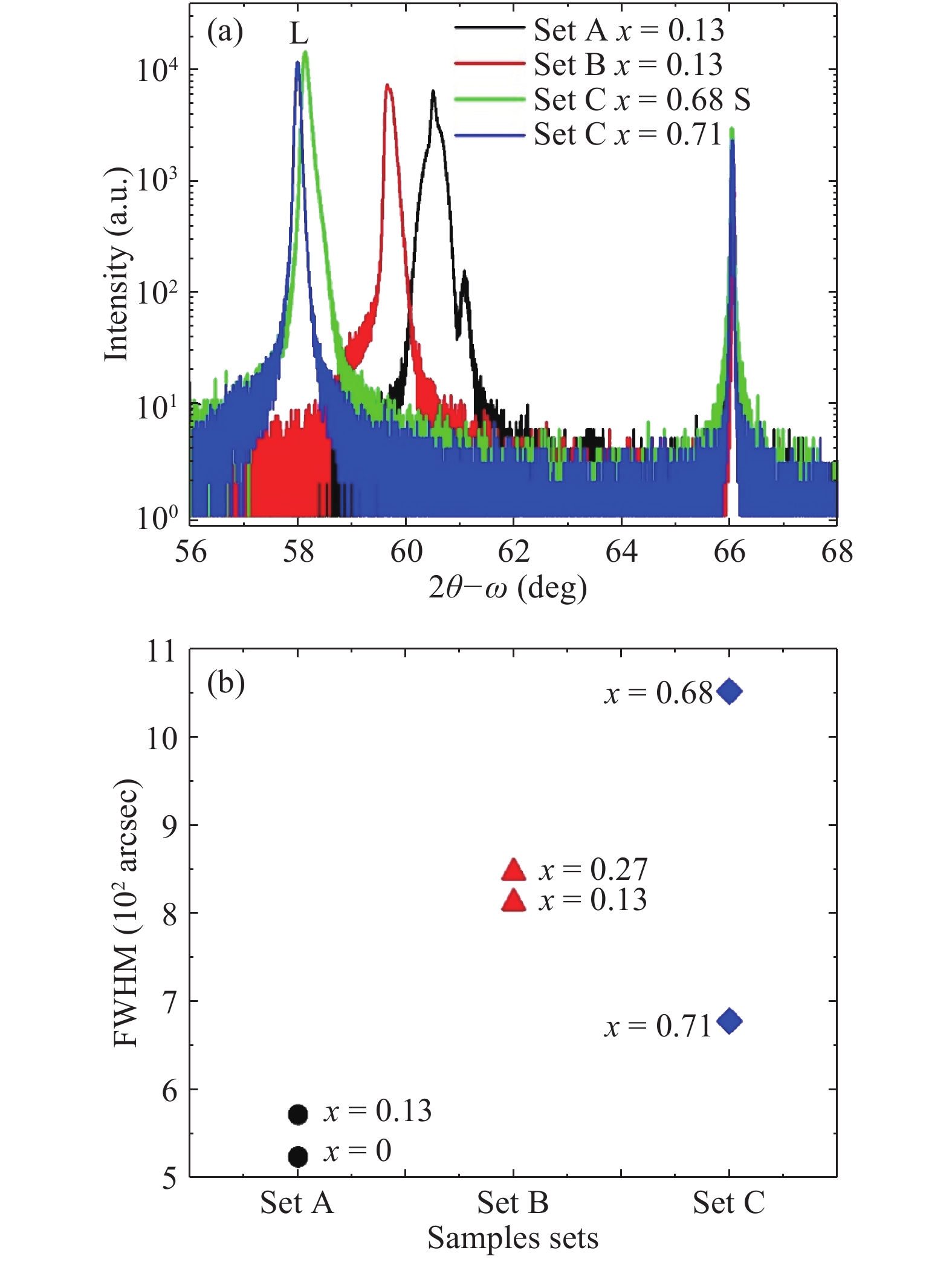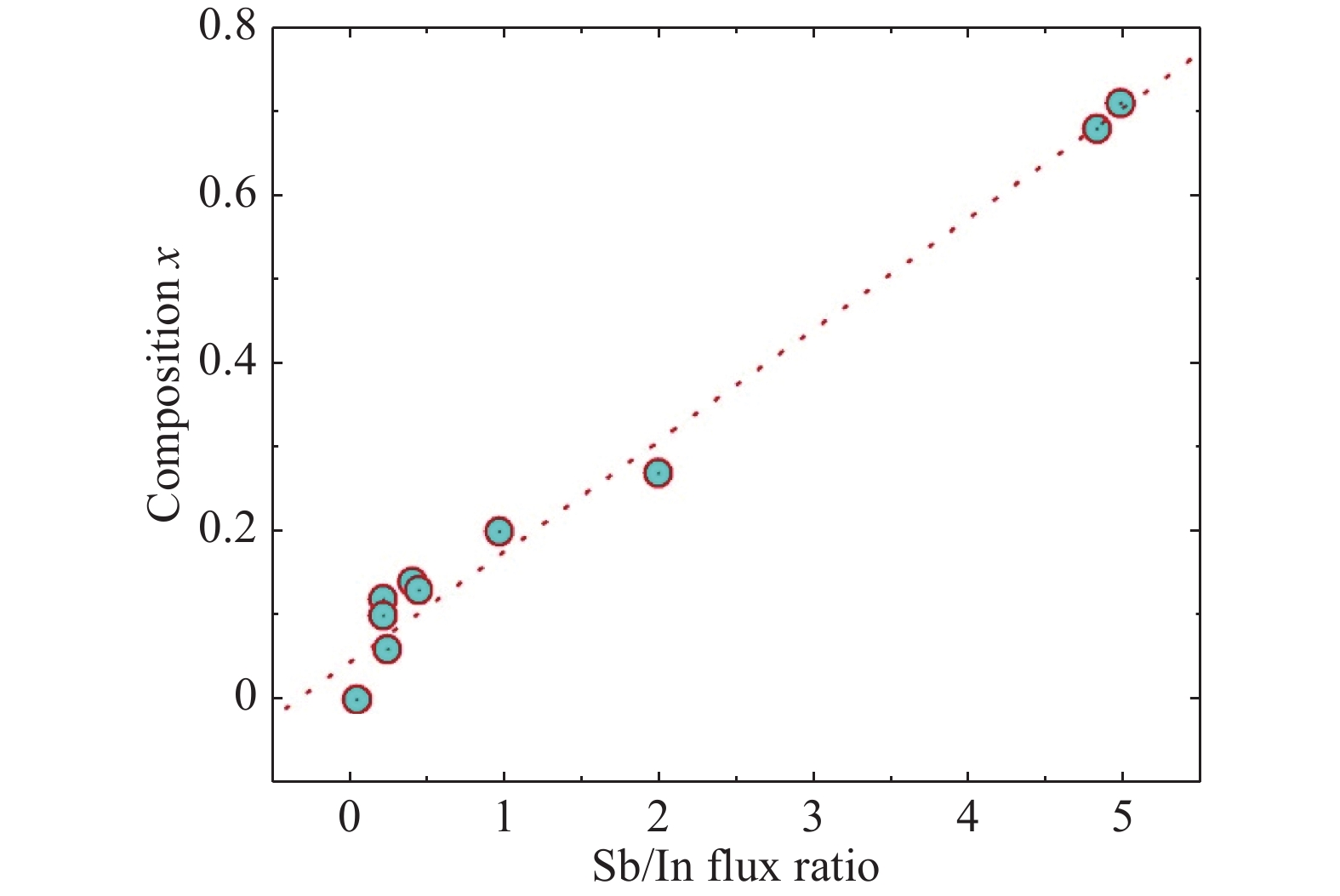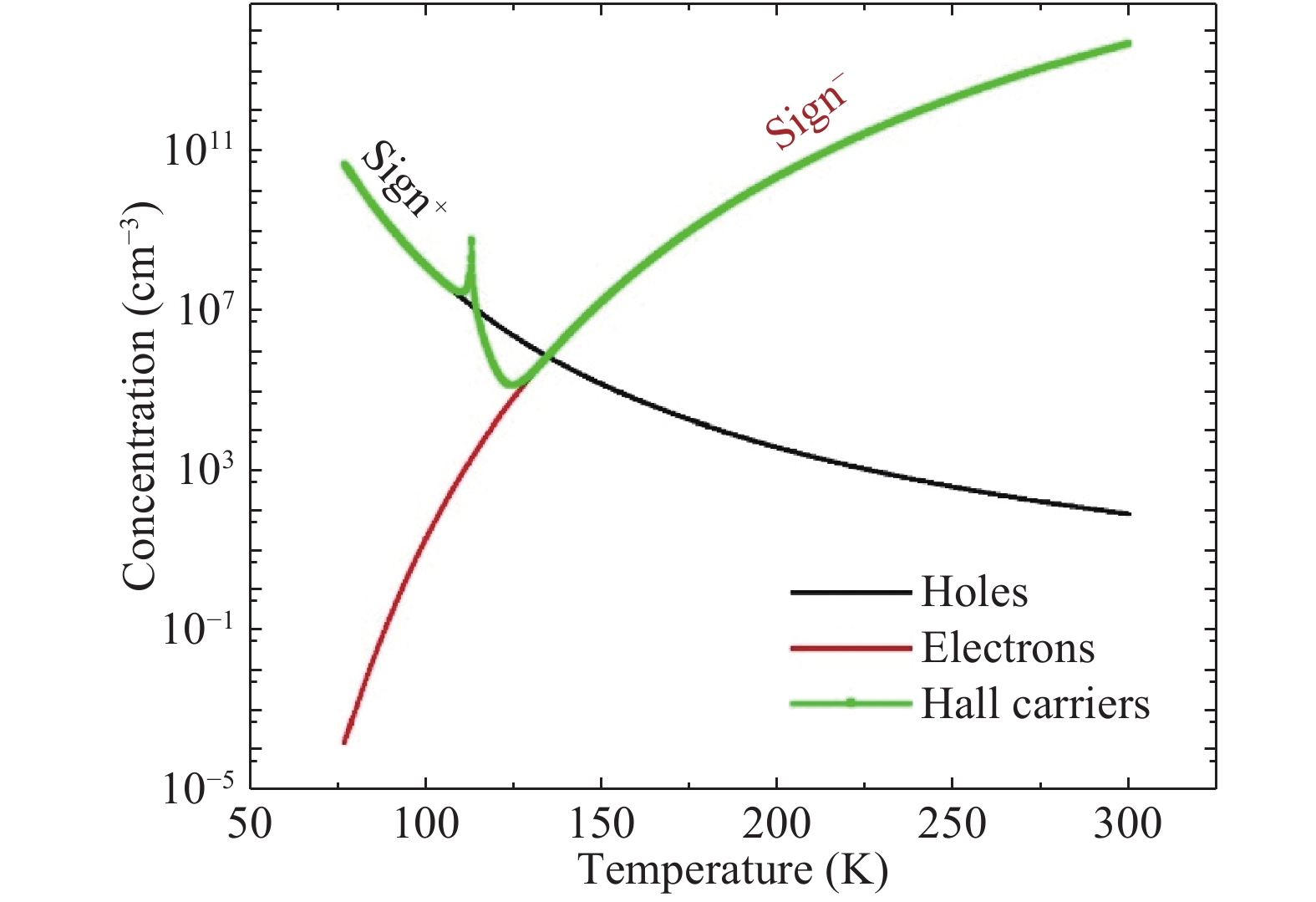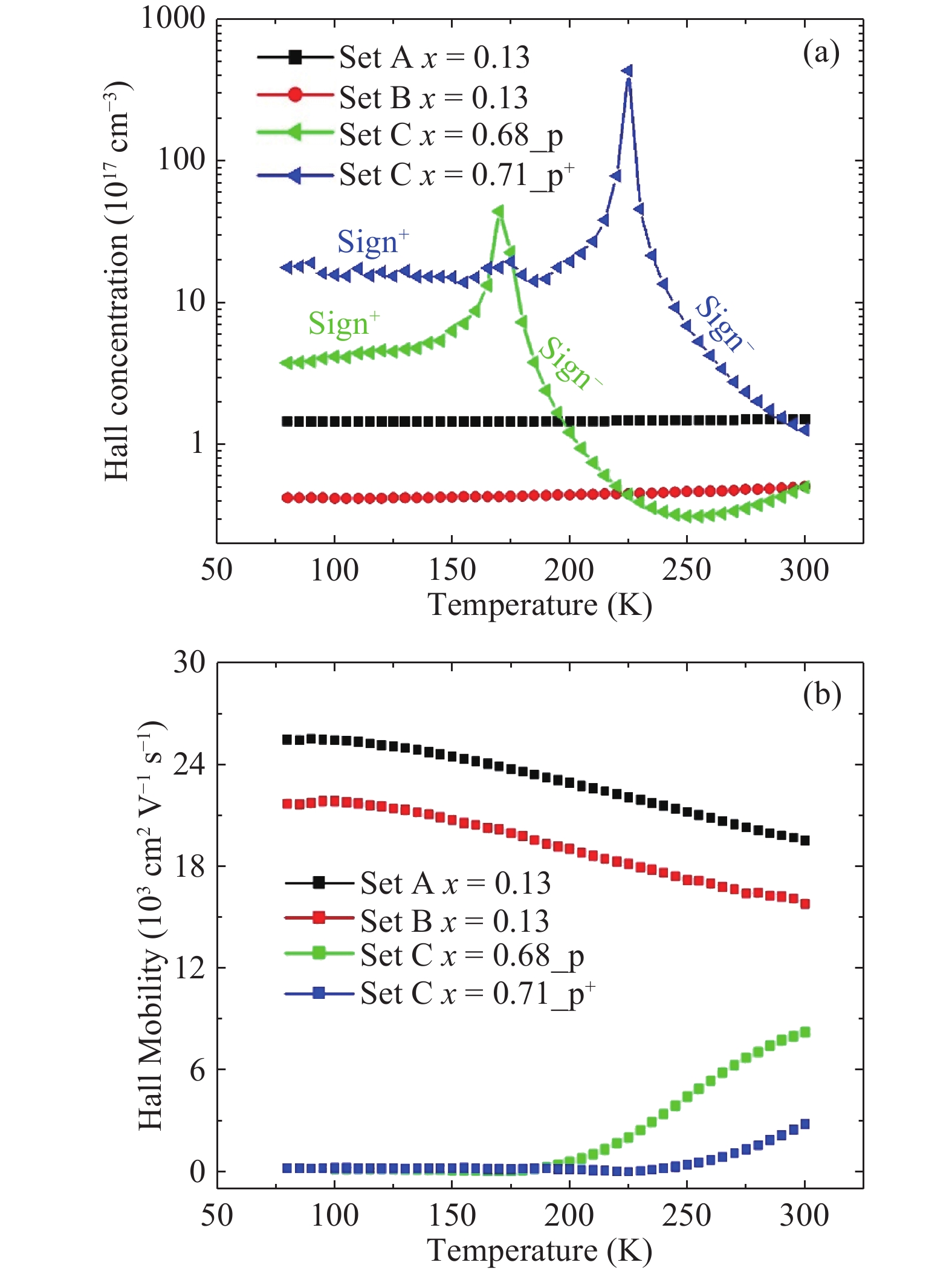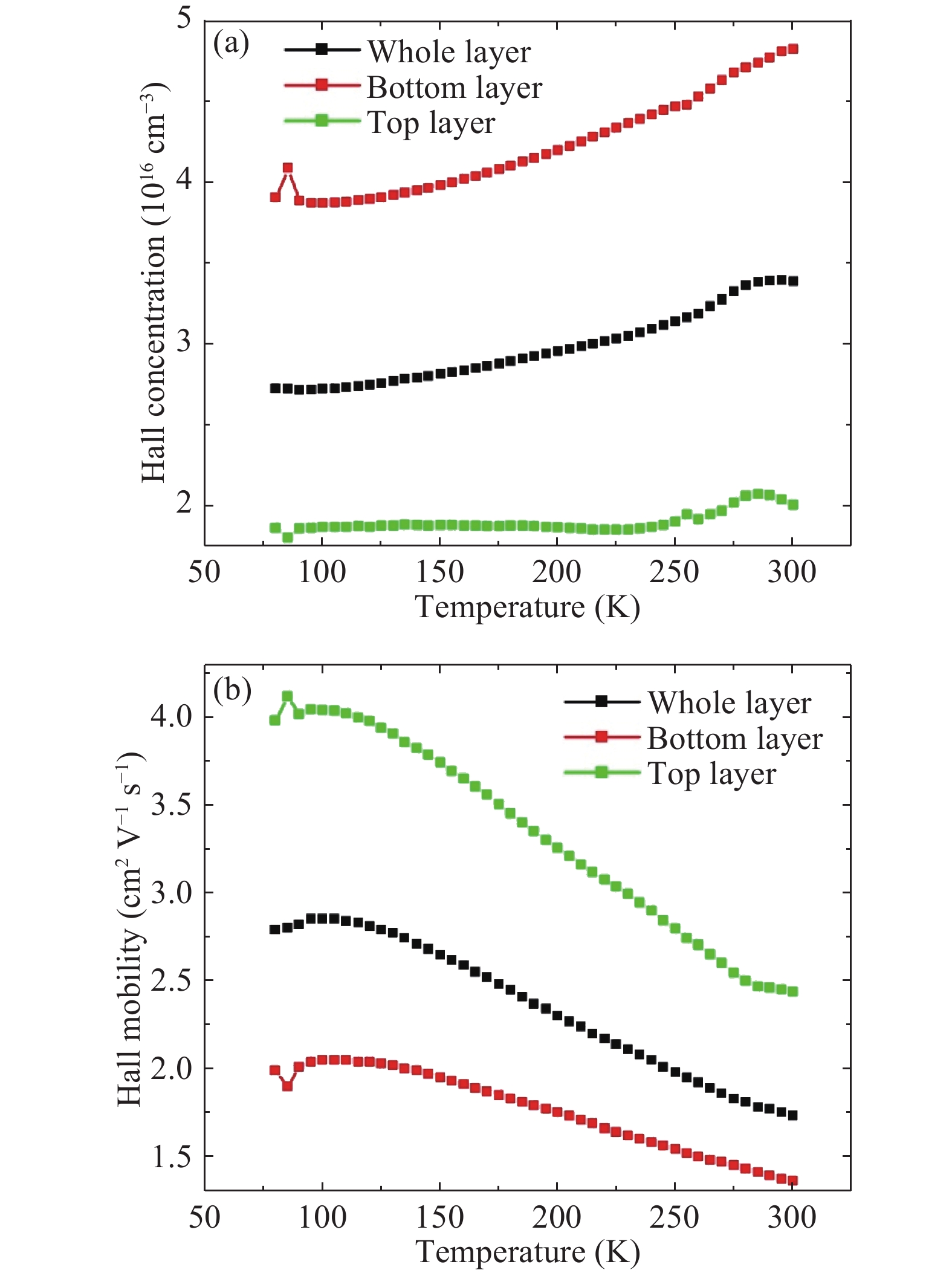| Citation: |
D. Benyahia, Ł. Kubiszyn, K. Michalczewski, A. Kębłowski, P. Martyniuk, J. Piotrowski, A. Rogalski. Investigation on the InAs1–xSbx epilayers growth on GaAs (001) substrate by molecular beam epitaxy[J]. Journal of Semiconductors, 2018, 39(3): 033003. doi: 10.1088/1674-4926/39/3/033003
****
D. Benyahia, Ł. Kubiszyn, K. Michalczewski, A. Kębłowski, P. Martyniuk, J. Piotrowski, A. Rogalski. Investigation on the InAs1–xSbx epilayers growth on GaAs (001) substrate by molecular beam epitaxy[J]. J. Semicond., 2018, 39(3): 033003. doi: 10.1088/1674-4926/39/3/033003.
|
Investigation on the InAs1–xSbx epilayers growth on GaAs (001) substrate by molecular beam epitaxy
DOI: 10.1088/1674-4926/39/3/033003
More Information
-
Abstract
Undoped and Be-doped InAs1–xSbx (0 ≤ x ≤ 0.71) epitaxial layers were successfully grown on lattice mismatched semi-insulating GaAs (001) substrate with 2° offcut towards <110>. The effect of the InAs buffer layer on the quality of the grown layers was investigated. Moreover, the influence of Sb/In flux ratio on the Sb fraction was examined. Furthermore, we have studied the defects distribution along the depth of the InAsSb epilayers. In addition, the p-type doping of the grown layers was explored. The InAsSb layers were assessed by X-ray diffraction, Nomarski microscopy, high resolution optical microscopy and Hall effect measurement. The InAs buffer layer was found to be beneficial for the growth of high quality InAsSb layers. The X-ray analysis revealed a full width at half maximum (FWHM) of 571 arcsec for InAs 0.87Sb0.13. It is worth noting here that the Hall concentration (mobility) as low (high) as 5 × 1016 cm−3 (25000 cm2V−1s−1) at room temperature, has been acquired.-
Keywords:
- MBE,
- InAsSb,
- Hall effect,
- GaAs,
- X-ray diffraction
-
References
[1] Wooley J C, Warner J. Optical energy-gap variation in InAs-InSb alloys. Can J Phys, 1964, 42: 1879 doi: 10.1139/p64-176[2] Bethea C G, Yen M Y, Levine B F, et al. Long wavelength InAs1–xSbx/GaAs detectors prepared by molecular beam epitaxy. Appl Phys Lett, 1987, 51: 1431 doi: 10.1063/1.98647[3] Dobbelaere W, De Boeck J, Borghs G. Growth and optical characterization of InAs1–xSbx (0 ≤ x ≤ 1) on GaAs and GaAs-coated Si by molecular beam epitaxy. Appl Phys Lett, 1989, 55: 1856 doi: 10.1063/1.102187[4] Dobbelaere W, De Boeck J, Bruynseraede C, et al. InAsSb light emitting diodes and their applications to infrared gas senors. Electron Let, 1993, 29: 890 doi: 10.1049/el:19930594[5] Biefeld R M. The metal–organic chemical vapor deposition and properties of III–V antimony-based semiconductor materials. Mater Sci Eng, 2002, R 36: 105[6] Yen M Y, People R, Wecht K W. Long wavelength (3–5 and 8–12 μm) photoluminescence of InAs1–xSbx grown on (100) GaAs by molecular beam epitaxy. J Appl Phys, 1988, 64: 952 doi: 10.1063/1.341904[7] Gao H, Wang W, Jiang Z, et al. The growth parameter influence on the crystal quality of InAsSb grown on GaAs by molecular beam epitaxy. J Cryst Growth, 2007, 308: 406 doi: 10.1016/j.jcrysgro.2007.08.018[8] Nakamura S, Jayavel P, Koyama T, et al. Investigations on the effect of InSb and InAsSb step-graded buffer layers in InAs0.5Sb0.5 epilayers grown on GaAs (001). J Cryst Growth, 2007, 300: 497 doi: 10.1016/j.jcrysgro.2006.11.298[9] Yen M Y, Levine B F, Bethea C G, et al. Molecular beam epitaxial growth and optical properties of InAs1–xSbx in 8–12 μm wavelength range. Appl Phys Lett, 1987, 50: 927 doi: 10.1063/1.97982[10] Chyi J I, Kalem S, Kumar N S, et al. Growth of InSb and InAs1–xSbx on GaAs by molecular beam epitaxy. Appl Phys Lett, 1988, 53: 1092 doi: 10.1063/1.100031[11] Tsukamoto S, Bhattacharya P, Chen Y C, et al. Transport properties of InAs1–xSbx (0 ≤ x ≤ 0.55) on InP grown by molecular beam epitaxy. J Appl Phys, 1990, 67: 6819 doi: 10.1063/1.345071[12] Chiang P K, Bedair S M. Growth of InSb and InAs1–xSbx by OM-CVD. J Electrochem Soc, 1984, 131: 2422 doi: 10.1149/1.2115308[13] Chiang P K, Bedair S M. p–n junction in InSb and InAs1–xSbx by metalorganic chemical vapor deposition. Appl Phys Lett, 1985, 46: 383 doi: 10.1063/1.95640[14] Biefeld R M, Hills C R, Lee S R. Strain relief in compositionally graded InAs1–xSbx buffer layers and InAxSb1–x/InSb strained-layer superlattices grown by MOCVD. J Cryst Growth, 1988, 91: 515 doi: 10.1016/0022-0248(88)90119-4[15] Kim J D, Wu D, Wojkowski J, et al. Long-wavelength InAsSb photoconductors operated at near room temperatures (200–300 K). Appl Phys Lett, 1996, 68: 99 doi: 10.1063/1.116784[16] Mao Y, Krier A. Liquid phase epitaxial growth and photoluminescence of InAsSb grown on GaSb substrates from antimony solution. J Cryst Growth, 1993, 133: 108 doi: 10.1016/0022-0248(93)90110-I[17] Gao F, Chen N, Liu L, et al. InAs0.3Sb0.7 films grown on (100) GaSb substrates with a buffer layer by liquid phase epitaxy. J Cryst Growth, 2007, 304: 472 doi: 10.1016/j.jcrysgro.2007.03.011[18] Shanabrook B V, Waterman J R, Davis J L, et al. Large temperature changes induced by molecular beam epitaxial growth on radiatively heated substrates. Appl Phys Lett, 1992, 61: 2338 doi: 10.1063/1.108236[19] Benyahia D, Kubiszyn L, Michalczewski K, et al. Molecular beam epitaxial growth and characterization of InAs layers on GaAs (001) substrate. Opt Quant Elect, 2016, 48: 428 doi: 10.1007/s11082-016-0698-4[20] Marcadet X, Rakovska A, Prevot I, et al. MBE growth of room-temperature InAsSb mid-infrared detectors. J Cryst Growth, 2001, 227: 609[21] Sun Q L, Wang L, Wang W Q, et al. Growth and characterization of InAs1–xsbx with different sb compositions on GaAs substrates. Chin Phys Lett, 2015, 32: 106801 doi: 10.1088/0256-307X/32/10/106801[22] Egan R J, Chin V W L, Tansley T L. Dislocation scattering effects on electron mobility of InAsSb. J Appl Phys, 1994, 75: 2473 doi: 10.1063/1.356244[23] Petriz R L. Theory of an experiment for measuring the mobility and density of carriers in the space-charge region of a semiconductor surface. Phys Rev, 1958, 110: 1254 doi: 10.1103/PhysRev.110.1254[24] Shinde U P. Hall coefficient, mobility and carrier concentration as a function of composition and thickness of Zn–Te thin films. Adv Appl Sci Res, 2015, 6: 215 -
Proportional views





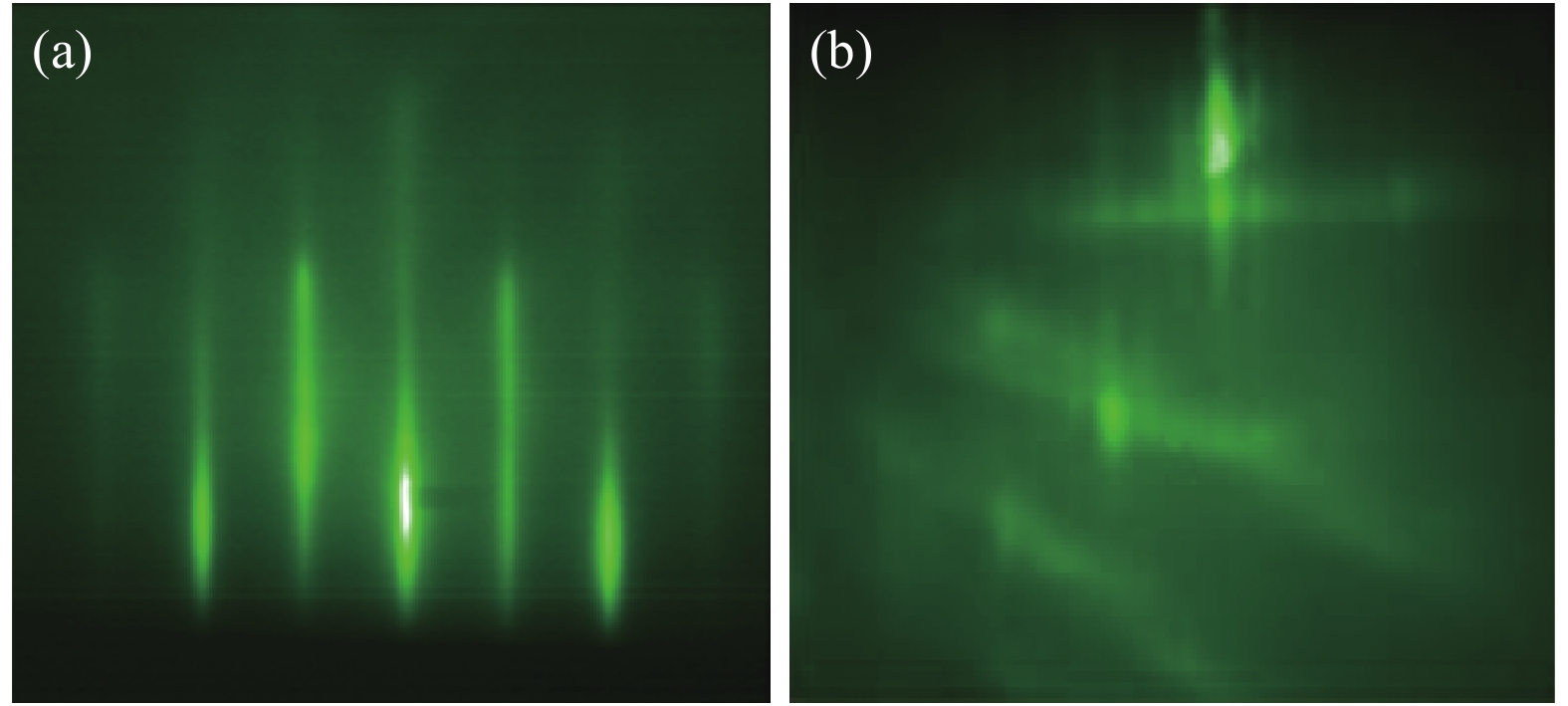
 DownLoad:
DownLoad:

